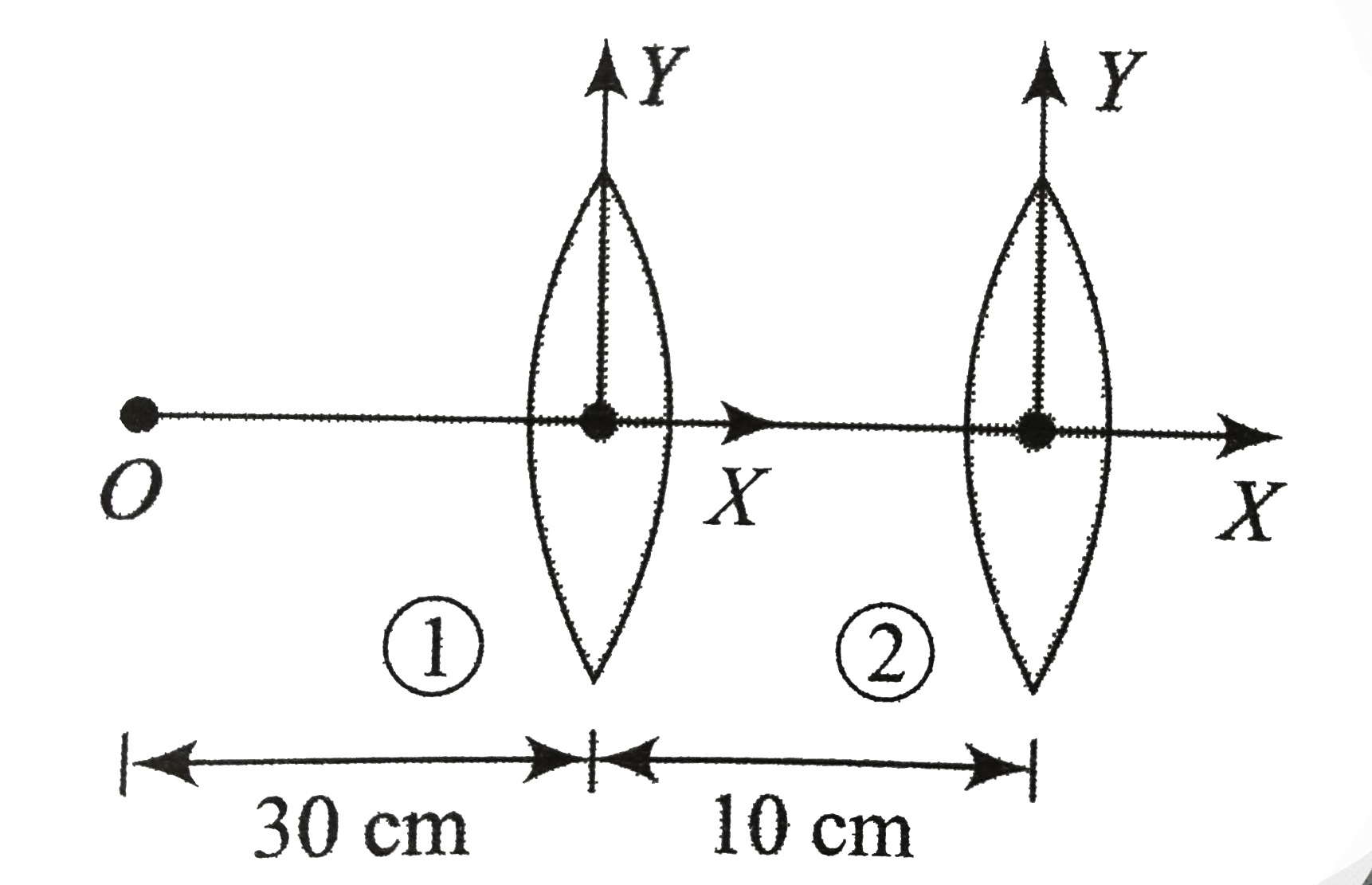Two equi-convex lenses of focal lengths 20 cm and 30 cm respectively are placed at a separation 'd' with their principal axes coinciding. An object placed at a distance 'u' from the first lens, forms an image at a distance v from the second lens. Find the ratio uv, if it is observed that u and v have the same set of values for d = 30 cm, 60 cm, 120 cm and 150 cm.
12
23
2
32
The correct Answer is:D
The object and image positions relative to their closest lenses do not depend on the separation between the two lenses. So the rays between the lenses are parallel. Object is at the focus of the first lens and image at the appropriate focus of the second lens.
⇒vu=f2f1=3020=32
Topper's Solved these Questions
Similar Questions
An object is placed at a distance of 30 cm from a convex lens of focal length 20 cm.
View SolutionAn optical system consists of two convergent lenses with focal length f1=20cmandf2=10cm. The distance between the lenses is d=30cm. An object is placed at a distance of 30cm from the first lens. At what distance from the second lens will the images be obtained ?
View Solution
Knowledge Check
Two equi convex lenses of focal lengths 20 cm and 30 cm respectively are placed at a separation d with their principal axes coincidng. An object placed at a distance u from the first lens, from an angle image at a distance v from the second lens. Find the ratio Vu, if it is observed that u and v have the sames set of values for d=30cm, 60cm, 120cm and 150cm
A1/2B2/3C2D3/2A convex lens of focal length 20 cm and a concave lens of focal length 10 cm are placed 20 cm apart. In between them an object placed at distance x from the convex lens.
What is the value of x (in cm ) so that images from by both the lenses coincides ?A20(√3−1) and 1√3B10(√3−1)C20√3Dnone of theseAn object placed at a distance of a 9cm from the first principal focus of a convex lens produces a real image at a distance of 25cm. from its second principal focus. then the focal length of the lens is :
A9 cmB25 cmC15 cmD17 cm
An optical system consists of two convergent lenses with focal length f1=20cmandf2=10cm. The distance between the lenses is d=30cm. An object is placed at a distance of 30cm from the first lens. At what distance from the second lens will the images be obtained ?
View SolutionA convex lens of focal length 20 cm and a concave lens of focal length 10 cm are placed 20 cm apart. In between them an object placed at distance x from the convex lens.
What is the value of x (in cm ) so that images from by both the lenses coincides ?
View SolutionAn object is placed at a distance of 30 cm from a convex lens of focal length 20 cm.Find the position of the image .
View SolutionAn object is placed at a distance of 30 cm from a convex lens of focal length 20 cm.Is the image erect or inverted ?
View SolutionA convex lens of focal length 20cm is placed 10cm away from a second convex lens of focal length 25 cm. What wil be the location of the image of an object at 30 cm in front of the first lens?

View Solution
